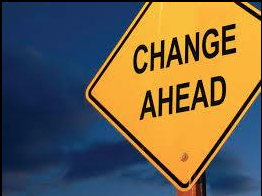 In the disciplines of structural dynamics and system dynamics, there is one force that, in many ways, is THE dynamic that causes everything to happen. It is nature’s striving for equilibrium.
In the disciplines of structural dynamics and system dynamics, there is one force that, in many ways, is THE dynamic that causes everything to happen. It is nature’s striving for equilibrium.
The principle is this: Anytime something within the same structure contains differences, nature strives to equalize them, in other words, transform the differences into something that is the same.
From Isaiah, comes this interesting insight:
“Let every valley be lifted up, And every mountain and hill be made low; And let the rough ground become a plain, And the rugged terrain a broad valley…”
When I first heard this in Martin Luther King’s I Have A Dream speech, I didn’t quite get it. Over time, I came to realize the principle that is being described is equilibrium.
Here are a few examples of a system striving for equilibrium: when an affluent society lives juxtaposed to a poor society, a state of non-equilibrium exists. But this condition is not stable. This leads to migration flows, and the movement is in one direction only. You don’t see a lot of rich people migrating to the poor parts of town.
From a systems perspective, the goal of the system is to create a state of equilibrium so that the difference between rich and poor are resolved, establishing equilbrium. Right now, all over the world, migration flows are occurring with greater and greater volume. Of course, some of this has to do with the dangerous conditions people are evading. This is another state of non- equilibrium, unsafe/safe.
One of the more interesting experiments in social engineering, something that some politicians have made a dirty phrase in America, is from Singapore, where social engineering is well conceived and executed. They have build low-income apartment buildings next to high-income apartment buildings. The result: everyone takes care of the neighborhood. You cannot tell the pricey place from the low-cost place. They have understood the principle of equilibrium and used it to harmonize people across the income spectrum.
Equilibrium is neither good nor bad. It is simply a force in play all of the time. Structural tension, which is the prime structure we use in the creative process, is a deliberate set up of non-equilibrium. The difference between the desired state (the outcome we want to create,) and the actual state (current reality in relationship to our desired outcome,) forms a tension because of the non-equilibrium factor.
This tension is not anxiety, or stress, or pressure. It is structural. This is not about your moods, your attitude, your personality type, your opinion about yourself, or your self-esteem. It is about how, in structural dynamics, that non-equilibrium always strives to move to equilibrium. Tension always strives for resolution. This is the arrow aimed at the target with adequate tension on the bow. Without the tension, the arrow cannot reach the target. In the case of structural tension, the best resolution (or establishment of equilibrium) is accomplished by having what you want.
If structural tension were the only form we use, life would be easy. But, in fact, there is another structure that makes life much harder, and that is structural conflict.
Structural tension creates an advancing pattern in which every episode of the creative process, even the ones that don’t fully succeed, becomes the platform for future success. Structural tension creates momentum. Structural conflict creates a pattern of oscillation. In this pattern, success is always followed by a reversal. At the end of the story, you no longer have what you want, even if you had it for a while.
Here is an event: You have what you want.
In an advancing pattern, the underlying structure is equilibrium. The desired state and the actual state are the same. End of differences.
In an oscillating pattern, this same event, having what you want, is actually the point of most non- equilibrium, because there is an opposing force in play, usually your concepts which are moving toward a different resolution. In this structure, having what you want is unsustainable. The structural tendency is to move away from what you want, not because of any psychological condition, but because structure will always seek equilibrium, and that is as impersonal as gravity.
We have two types of patterns in our life: advancing and oscillating. What makes the difference is the structure you are in. But this is easier said than done.
In all of my books, in all of our workshops and seminars, in the field of structural dynamics, one of the most important changes that can be accomplished is a change of underlying structures from ones that work against us to ones that work in our factor.
This is not problem solving. Rather, it is restructuring, creating better structures, ones that are capable of supporting our own creative processes. However, it is difficult, and maybe impossible to see a structure when you are in it. First, you need to back up, to be able to change vantage points, and to understand how the parts fit together.
As is typical of the human condition, people want to change things before they understand what is causing the current situation. This leads to false starts, reactions to circumstances, and, then, back in the same situation once again.
Choices
One workshop I recommend for a true transformative change of underlying structure is Choices. Led by my wife and colleague Rosalind Fritz, this workshop will only happen once this year: June 26th to June 28th. It is here in Vermont. One of the most critical aspects of this change comes from seeing your macrostructural patterns. This is a technique in which you can see the specific set of events that reoccur in your life. There is an oscillating pattern and an advancing pattern. One thing you are able to accomplish in the workshop is to understand the structural forces in play in your life, and move to a new structure, one that has a higher chance of sustainable success.
This workshop is at the end of this month, so if you are considering taking it, please enroll now. Or if you need more information, email us. Seminars@robertfritz.com







 Since Dr. Wayne Andersen and I are writing a book on identity, I’ve become more aware of how people present themselves on Facebook. What is interesting is that it makes no difference what part of the world anyone is in, they all have something in common, and that is, most of them want to be Rock Stars! This is what Paul Simon calls their “photo op.” You can see a European face, an African Face, a Chinese Face, a Latin face, an American face, a South American face, a Middle Eastern face and you will see something wonderful about human nature. People love to present themselves with a degree of glamour or drama or theater or that old time Rock and Roll.
Since Dr. Wayne Andersen and I are writing a book on identity, I’ve become more aware of how people present themselves on Facebook. What is interesting is that it makes no difference what part of the world anyone is in, they all have something in common, and that is, most of them want to be Rock Stars! This is what Paul Simon calls their “photo op.” You can see a European face, an African Face, a Chinese Face, a Latin face, an American face, a South American face, a Middle Eastern face and you will see something wonderful about human nature. People love to present themselves with a degree of glamour or drama or theater or that old time Rock and Roll.